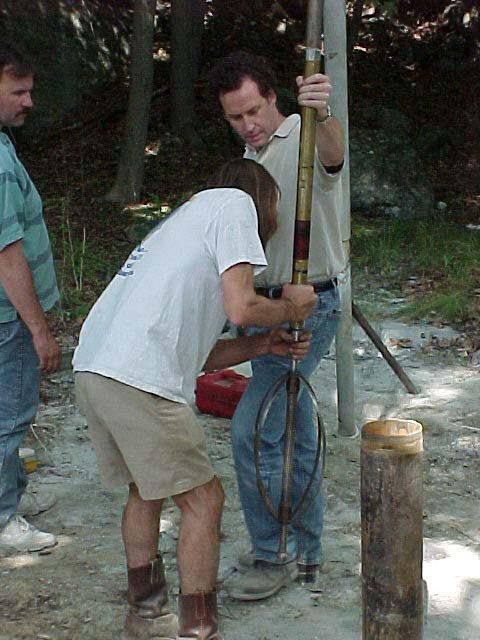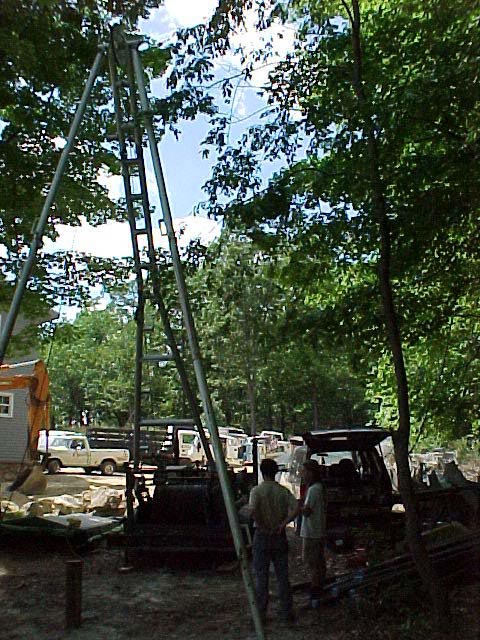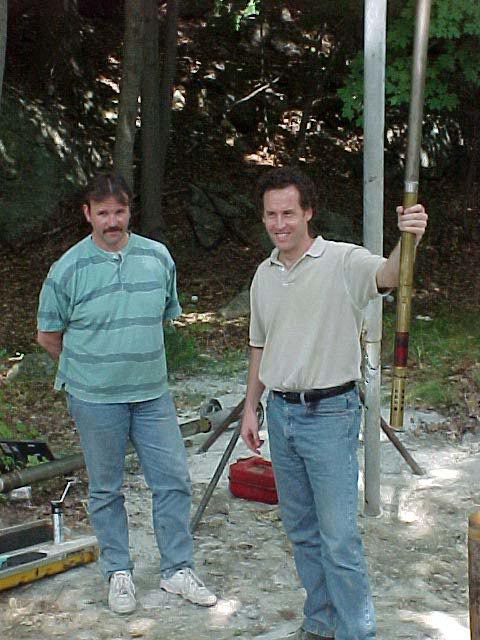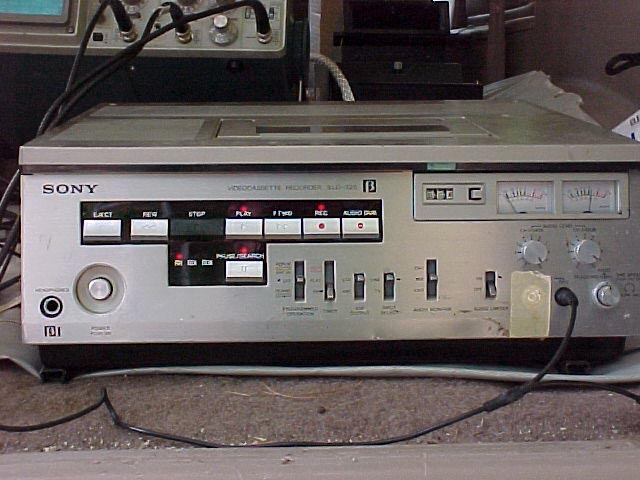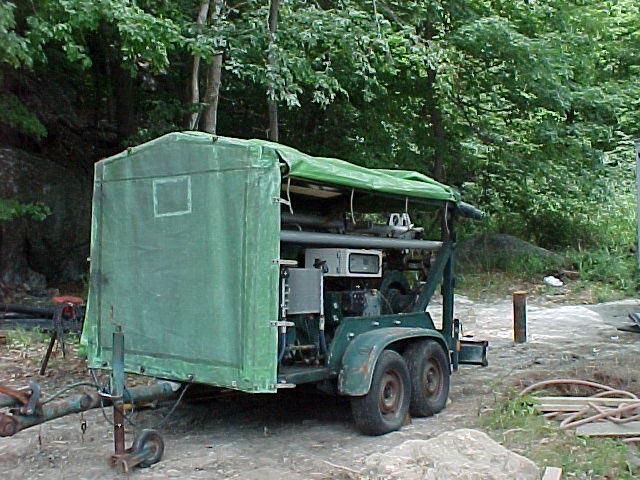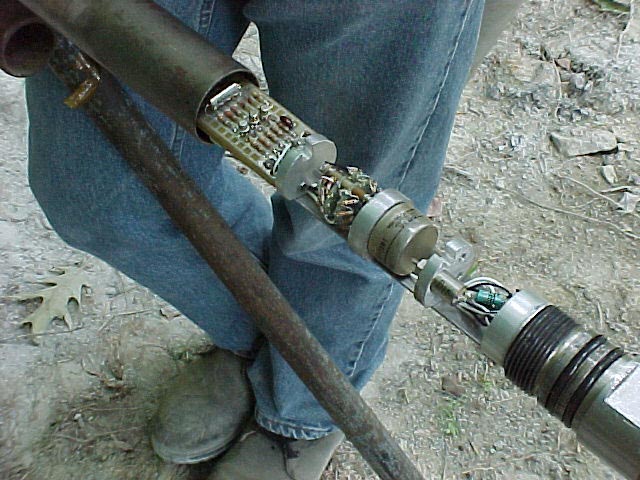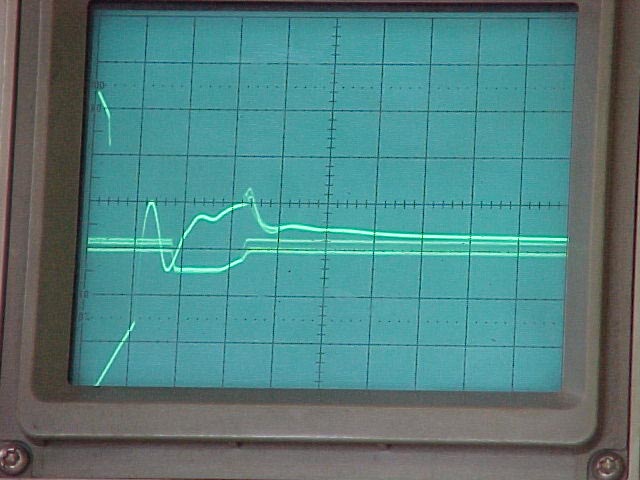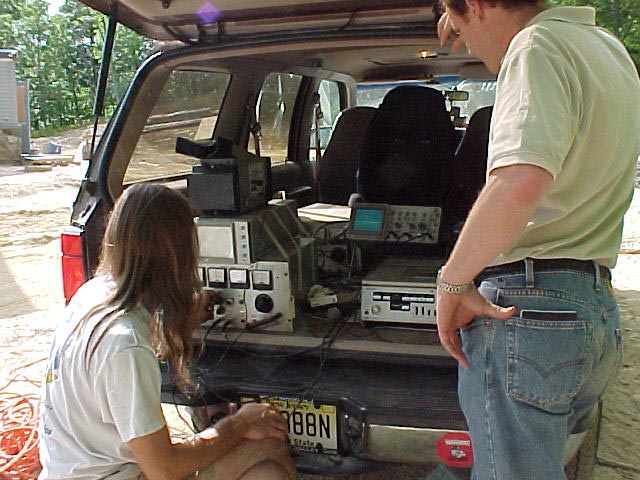Black Rock Forest Overview
July 13-17, 1999
The Lamont Doherty Earth Observatory’s Borehole Research Group (BRG) logged one hole at the Black Rock Forest in Cornwall, NY. The hole was 140 meters deep with water at 53 m. The equipment was brought to the site via West Central Towing. A trailer-mounted logging winch was used to raise and lower the tools. The winch had a functioning analog totalizer for depth. In attendance were Greg Myers, Dave Goldberg, Walt Masterson, and Erich Scholz.
The tool suite consisted of:
- Temperature/Acceleration/Pressure tool (TAP). The tool was designed to measure fluid temperature and pressure and store the data in memory.
- Analog Borehole Televiewer (BHTV). This tool captures acoustic images of the borehole wall and “writes’ the images onto Polaroid film. The film is digitized post logging for data analysis.
The first run was made with the TAP tool in memory mode followed by one run with the BHTV. A third run was carried out with the TAP tool reinitialized and lowered to 138 meters to record temperature and pressure over a 3 day period. BRG personnel returned to the site on July 17 and removed the tool from the hole. The data was downloaded from the tool at 9 am.
September 7, 1999
Additional tools were run on September 7, 1999. The Gamma/Caliper sonde consisted of a sodium iodide scintillation crystal that measures total gamma ray counts and a 3-arm caliper that measures the borehole diameter. Gamma Ray and Caliper were acquired to total depth (140 m).
Logging Data
All data are uncorrected for hole size and environmental factors. Digital depth was not acquired at the time of logging therefore the log depth is derived from pressure data.
Gamma Ray data can be used for qualitative analysis only as the measurement has not been calibrated in a certified facility. To ensure the data were reasonable prior to tool deployment, a small calibration source was used to simulate a slightly “active” formation. The data represent the total gamma counts at each depth interval in counts per second (cps). The depth index column was added post logging. No environmental corrections were applied.
Caliper data were calibrated with 3-calibration “rings” prior to deployment. The caliper data was recorded in inches and converted to centimeters. No environmental corrections were applied to these data.
Temperature and Pressure were acquired at 1 sample per second. The units for temperature and pressure are deg C and psi, respecftively. Pressure data is relative, not absolute. No environmental corrections were applied.

